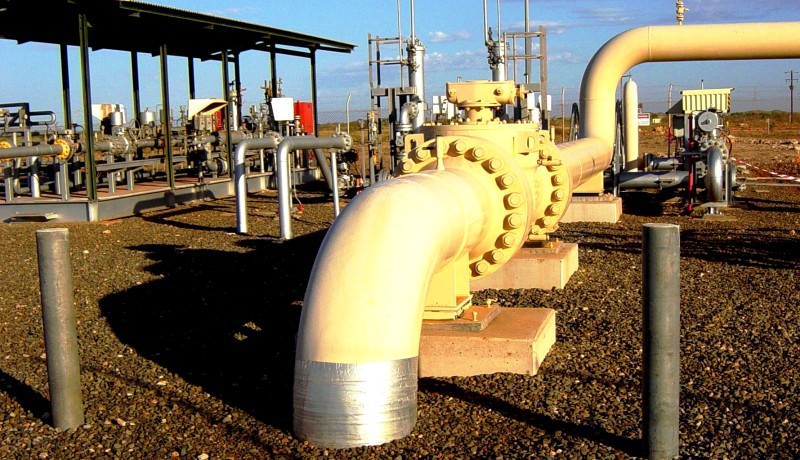EU’s Natural Gas Options
March 19, 2015
on
on

Shale gas axed
Chevron’s announcement on January 30, 2015, that it will discontinue shale gas exploration in Poland is the latest in a series of setbacks to shale gas development in Europe. It follows Chevron’s halts of shale exploration in Lithuania and Ukraine, while several other European countries have either already imposed a moratorium on hydraulic fracturing – or fracking – to extract gas from shale formations (e.g. France, Germany, and Bulgaria) or faced stiff public resistance against it based on environmental grounds. In contrast to the U.S., Europe also has more complex geology, higher population density near shale plays, and a dearth of water supplies.
As a consequence, shale gas exploration and drilling in Europe are more expensive compared to the U.S. and only viable with oil prices above $100 a barrel. With an estimated 12-13 trillion cubic meters (tcm) of shale gas resources in Europe, the industry may have a future in the continent, but the recent developments show that this is not the time yet. The European Commission’s Energy Union, a 20-page blueprint released on February 25, 2015, seems to reflect the apathy toward shale gas. The Energy Union, which sets a strategy for a unified energy policy of all EU members, mentioned shale gas only once with a caveat that only public acceptance and addressing environmental impact make shale drilling an option.
… But natural gas still key to EU
Even though fracking has lost its momentum in Europe, not the least because many European countries are concerned about climate change and there is fear that fracking might divert attention from integrating renewables to the energy mix, the EU still sees natural gas as one of the lower carbon energy sources. The Energy Union plan emphasizes the importance of diversifying gas suppliers, both pipeline and LNG, and streamlining numerous gas agreements between member-states and third parties with EU’s legislation. The EU’s push for diversification of gas suppliers is nothing new, but it has been further catapulted by the ongoing political conflict between Ukraine and Russia and the growing friction between Russia and the West.
However, the specific countries and regions highlighted in the Energy Union as important gas suppliers, such as Azerbaijan, Turkmenistan, Algeria, and the Middle East, are fraught with issues of their own. For example, gas imports to Europe from Azerbaijan’s Shah Deniz field via the Trans-Adriatic Pipeline, with the capacity of 10 billion cubic meters (bcm) of gas a year and an anticipated increase of up 16 bcm a year, hardly makes a dent in meeting EU’s consumption level of over 400 bcm a year. Transporting gas from Turkmenistan to Europe via the proposed Trans-Caspian Gas Pipeline is impossible until the littoral states of the Caspian Sea, including Russia, Iran, Azerbaijan, and Turkmenistan, resolve their long-standing legal disputes on the Caspian’s territorial boundaries. Although Algeria is Europe’s second largest gas supplier after Russia, gas exports from Algeria have fallen over the past ten years due to the rise in domestic consumption and decline in gross production. Potential imports from Iraq remain highly uncertain given the instability and security challenges in the country, while Iran’s chances of exporting gas to the EU hinges on the outcome of a possible nuclear deal between Tehran and five members of the UN Security Council plus Germany and lifting of sanctions. At this juncture, only Norway appears to be a reliable gas supplier to the EU, satisfying 24% of its gas needs.
LNG at the end of the tunnel
At the moment, LNG is the brightest spot in Europe’s gas supply security. With the slowdown of demand in Asia, Europe has now outstripped that region as the most attractive LNG destination for spot market deliveries. Although European economies are still weak and gas demand has not reached the pre-2010 level, the price of Asian spot LNG for delivery in March 2015 traded $1.20 less than European prices. LNG from Qatar, Norway, Nigeria, Algeria, and Trinidad and Tobago is now concentrated in Europe. Increasing Australian LNG exports to Asia is expected put more downward pressure on prices in that market and to create more flexible cargoes to Western and Southern European LNG terminals. While dependence on Russian pipeline gas is strongest among Eastern and Central European countries, Poland and Lithuania are due to begin importing LNG by next year, including deliveries from the U.S. The anticipated entry of the U.S. LNG to the world market is expected to provide more liquidity and flexibility, which is likely to create more import options for Europe. EU has the opportunity to expand its gas supply diversification efforts by building on the LNG momentum.
Image by Glen Dillon CC BY 3.0
Read full article
Hide full article


Discussion (0 comments)